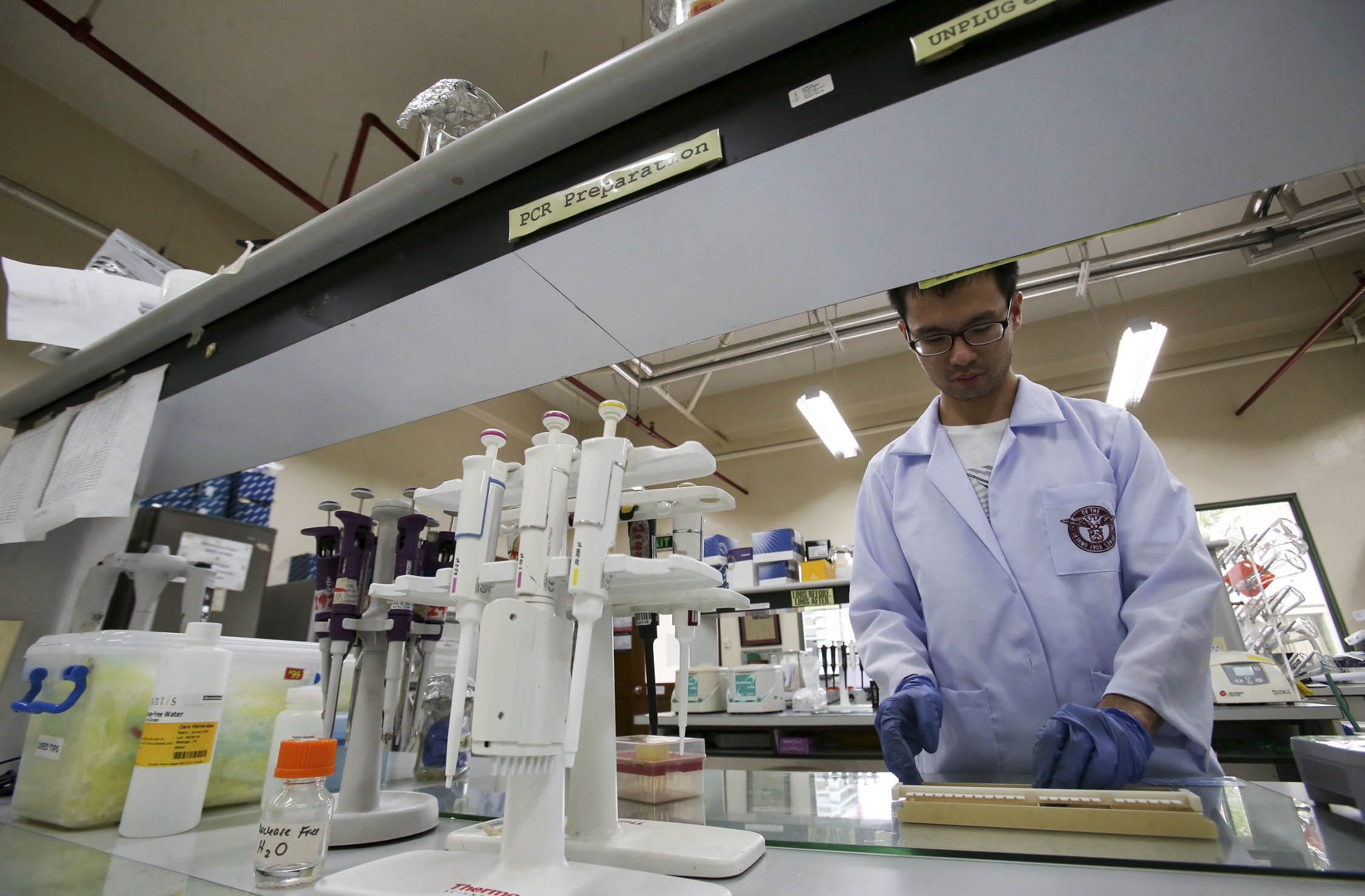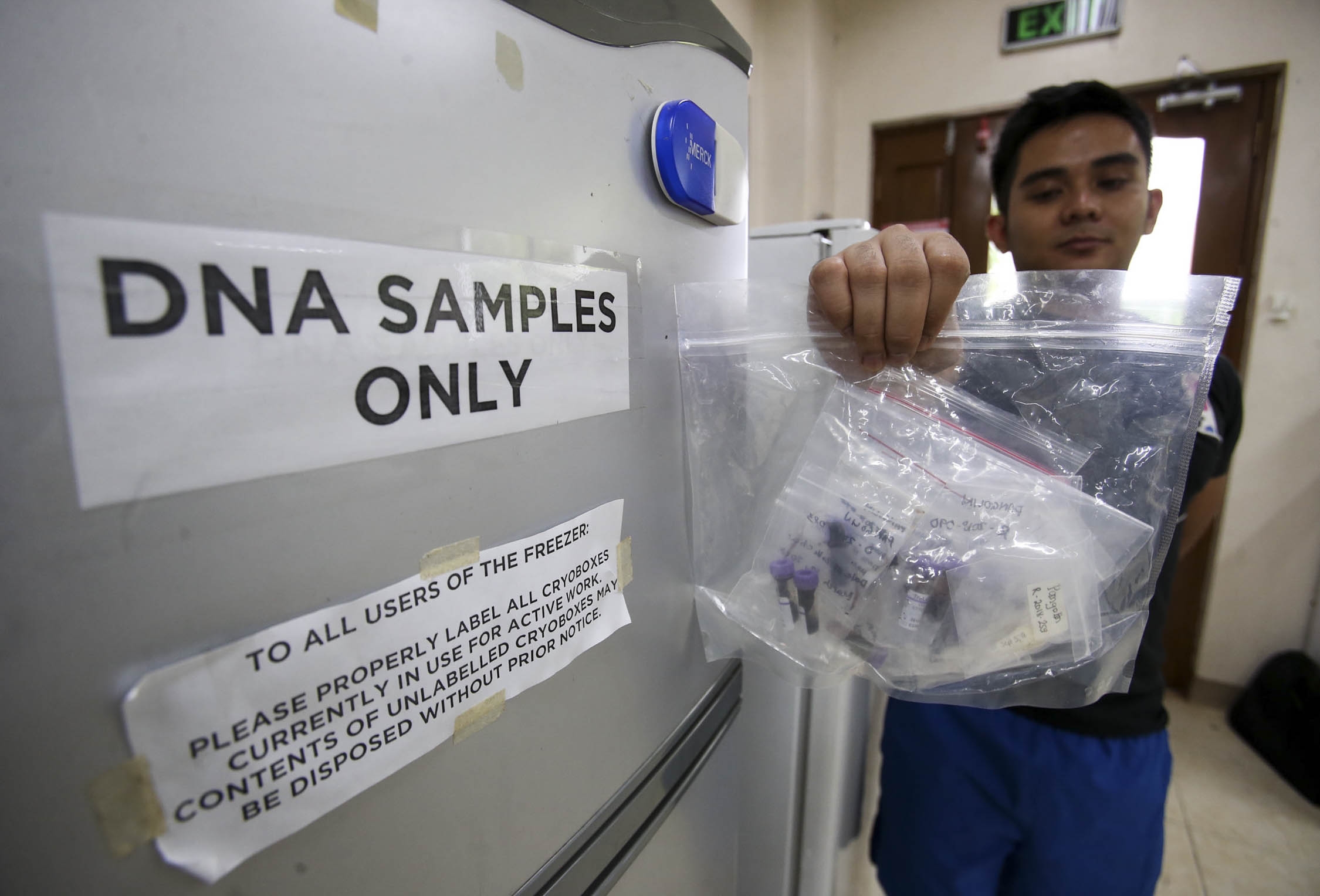UP’s ‘CSI’ helps catch illegal wildlife traders

ASSISTANCEThe environment department is working with the DNA Barcoding Laboratory of the University of the Philippines in monitoring the trade on wildlife. —Lyn Rillon
When officials of the Department of Environment and Natural Resources (DENR) learned that some eateries in Barangay Pasil in Cebu City were selling steaming bowls of turtle stew, they first needed to make sure that the meat used for the sought-after soup was indeed from marine turtles.
Known as “pawikan larang,” the orange-hued soup was also dubbed “pawer,” as some locals believed that consuming it would boost their sex drive.
After undercover officials managed to buy 2 kilograms of the cut-up meat, wildlife law enforcers turned to a laboratory in Quezon City, some 850 kilometers away, for answers.
DNA barcoding
In a laboratory on the University of the Philippines (UP) Diliman campus, scientists led by Ian Kendrich Fontanilla worked to identify the slaughtered animal.
Article continues after this advertisementFontanilla’s team employed a method called DNA (deoxyribonucleic acid) barcoding, by looking at the molecular fingerprint of the DNA from tissue samples and reading selected genes unique to every species.
Article continues after this advertisementThese barcodes are identified against a database of collected samples, which could help both scientists in their biodiversity research and law enforcement in prosecuting wildlife crime.
The team from the DNA Barcoding Laboratory of the UP Institute of Biology identified the meat as that of the endangered green sea turtle (Chelonia mydas), prompting wildlife law enforcers to continue their operation.
In the laboratory, scientists and researchers use wildlife forensics to help government agencies in collaring environmental criminals who thought that they could get away with murder.
Their work is similar to the popular television series “CSI: Crime Scene Investigation” — but stripped of the drama.
Fontanilla, who now heads the laboratory after the death of its founder, Perry Ong, earlier this year, said the use of wildlife forensics could be a significant tool in curbing the illegal wildlife trade.
In the past, law enforcers would simply rely on morphology, or the specimen’s appearance, to identify the species confiscated from operations.
3,000 frozen pangolins
But these can be tricky, as some animals or plants may have been slaughtered, processed and cut up and, thus, cannot be easily identified.
The crafting of the public database for barcodes started as early as 2008, but it was not until 2013 that scientists began a partnership with the DENR, when nearly 3,000 frozen pangolins were confiscated from a Chinese vessel in the Tubbataha Reefs Natural Park.
To ascertain the species of the scaly mammals, the environment department, through its Biodiversity Management Bureau, then led by Theresa Mundita Lim, sought the help of Ong and his team to identify the species found onboard.
Bringing pangolin carcasses and tissue samples to the laboratory, the team discovered the species to be the Sunda pangolin (Manis javanica), not the Philippine pangolin (Manis culionensis) — a discovery that helped prosecute the Chinese fishermen for poaching.
Fontanilla said aside from wildlife forensics, the DNA barcoding method could also be used to assess the country’s biodiversity and to study endangered and endemic species, as well as different population structures.
As a member of the Consortium for the Barcode of Life, the Philippines is committed to help populate the Barcode of Life Data System (BOLD), a sequence database that holds the DNA barcodes of thousands of species across the world.

EXAMINATION Masteral student John Gregor Roño shows samples from a killed animal sent by the Department of Environment and Natural Resources for analysis at the University of the Philippines. LYN RILLON
As of October 2018, 27,639 sequences from 3,586 species found in the Philippines had been uploaded to the database, according to Fontanilla.
To further maximize wildlife forensics as a tool against environmental crime, more scientists and laboratories need to be engaged in this science.
“At the moment, the DENR and UP are trying to train personnel from the DENR regional offices and state universities through the support of the Global Taxonomy Initiative, so there will be a critical mass,” Fontanilla said.
The goal is for different DENR regional offices to have their own local partners that have their own research laboratories, instead of everything being centralized in the laboratory in Quezon City.
Aside from the need for warm bodies, the sheer volume of the country’s rich biodiversity presents a daunting challenge.
“There is immense work that needs to be done. I’m quite certain that a lot of our species have already become extinct even before we can study them,” he said. “There’s not enough people and on the other hand, biodiversity is threatened. Time is not on our side.”
For instance, he said, data on plants and invertebrates are still severely lacking, compared with those for vertebrates.
Only 141 species of plants from the Philippines have been uploaded to BOLD as of last year, even as plant species are estimated to range between 3,000 and 10,000.
Wild-Force lab
Fontanilla said a separate laboratory to be known as WildForce or Wildlife Forensics Laboratory — another brainchild by Ong —would soon undergo assessment, so that it could be more mainstreamed in government efforts to curb the illegal wildlife trade.
Despite these efforts, he said DNA barcoding should not be seen as the be-all and end-all in the fight against traffickers.
“This is just one aspect. The bigger challenge is how we stop consumers from actually buying illegal[ly acquired] wildlife,” he said.
“Aside from strengthening our wildlife forensics, we should also be active in engaging our public why our biodiversity needs to be protected.”